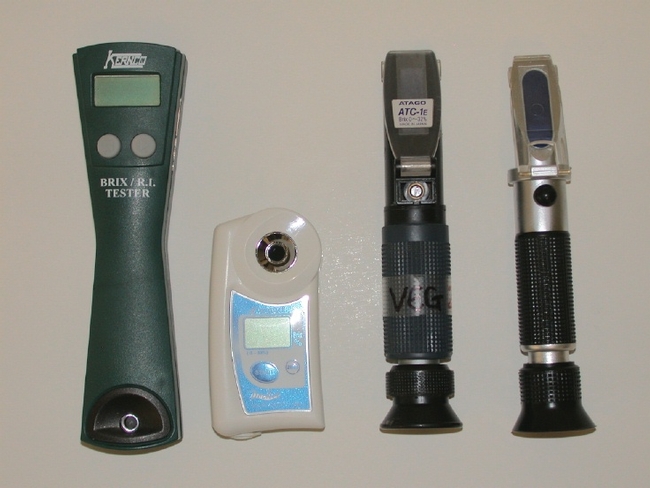Harvest season will soon be upon us in the San Joaquin Valley, which means that testing fruit for maturity will become a daily task beginning shortly after veraison. Proper sampling for sugar is important for making decisions on harvesting specific varieties or locations. Often referred to as “soluble solids” or “sugar” testing, fruit maturity evaluation involves sample collection and testing procedures that accurately represent the crop. Testing for sugar content in fruit has become easier as technology has improved. However, improved technology cannot eliminate deficiencies in sample collection or errors caused by poor refractometer care and maintenance.

Fruit harvest decisions based on inaccurate sugar readings can impact quality, storage durability and sales. Refractometers should be calibrated at the beginning of each use and, depending on how many samples are being measured, periodically throughout the sampling process.
Proper calibration requires a pure water source and testing solutions of known sucrose concentration. Water allows the user to “zero” the refractometer so fruit juices can be correctly measured. A solution with a known sucrose concentration gives the user confidence in the accuracy of the instrument.
Given the delay in maturity throughout the state, grape growers should take the time to properly calibrate their refractometers so correct soluble solids levels can be documented and harvest dates arranged according to cultivar, maturity, block, etc.
Learn more about proper refractometer calibration, use and maintenance here.